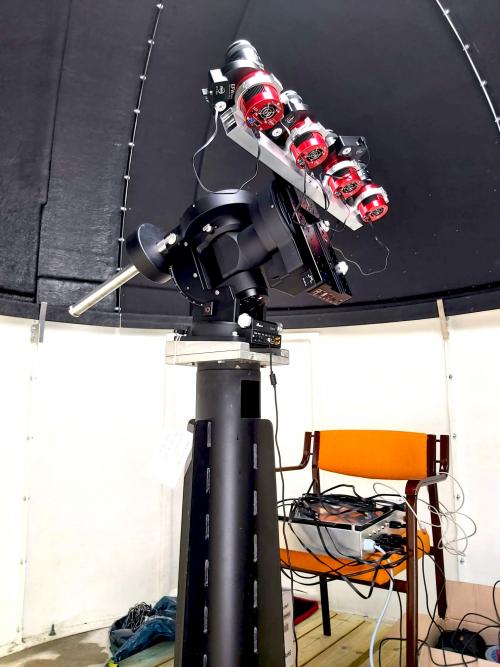Any planetary object with an atmosphere and a magnetic field could display auroras, or polar lights, occurring close to the magnetic poles. On Earth, the main driver is the solar wind, and its energetic particles, channeled and accelerated from the magnetosphere and precipitating in the upper atmosphere.
Those particles interact with neutrals, such as molecular nitrogen N2 and the atomic oxygen O. The deactivation of these particles create the polar lights, i.e. radiation emitted at specific wavelengths depending on which atoms or molecules are excited. Red and green light emissions, at 630.0 nm and 557.7 nm respectively, are coming from O at altitudes above 100 km. More energetic particles can reach altitudes lower than 100 km and interact with N2, giving rise to blue emissions at 427.8 nm.
PLIP in a few words
Recently, we have developed new instrumentation, dedicated to the measurement of a specific property of auroral lights: its polarisation, which refers to a preferential direction in which the light vibrates. Polarisation occurs when an asymmetry or an anisotropy is present, either in the source of the light or along its path toward the observer.
In the case of auroral emissions, the polarisation could be due to precipitating magnetospheric electrons aligned with the magnetic field or to ionospheric Pedersen and Hall currents closing the auroral electric circuit in the ionosphere. Although the origin is still debated, this new observable could shed additional light on the mechanisms producing the auroras, improve our understanding of the upper atmosphere, and be useful for space weather applications.
To improve our understanding of this phenomenon, we have developed PLIP (Polar Lights Imaging Polarimeter), an imager made of four identical commercial cameras equipped with fixed polarizing filters and narrow interference filters for the three main auroral spectral lines. The cameras have a large field of view of 44° x 30°, which allow us to measure the polarisation of a large portion of auroral arcs or diffuse auroras.
During winter 2022-2023, three observation campaigns have been organized at the Skibotn Observatory in Norway where PLIP could acquire many useful data, in parallel with several other instruments. All these data are currently being analyzed, an example is displayed in Figure 3. In particular, we search if the orientation of the polarisation at large scale (as visible by PLIP in its wide field-of-view) is linked to the orientation of field-aligned or ionospheric currents.


